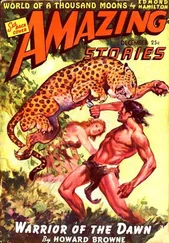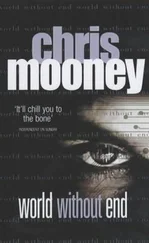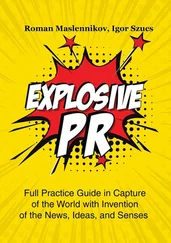David “Jonah” Western’s contribution to this book not only came from days of stimulating dialogue—and from the pilot’s seat in his Cessna—but also from a generation of colleagues he has inspired to conserve his beloved east equatorial African ecosystems. For their kindness and many good ideas, I thank Samantha Russell and Zippy Wanakuta of the African Conservation Centre; Evans Mgwani of the University of Nairobi; and Dr. Helen Gichohi of the African Wildlife Foundation.
Chicago Tribune correspondent Paul Salopek provided many helpful suggestions about African sites for this book. Long dinner conversations in Nairobi with Kelly West of the World Conservation Union’s Regional Office for Eastern Africa and Oscar Sims of Envision Multimedia were critical to connecting African environmental issues to the book’s theme. In Kenya, several guides and naturalists showed me places and wildlife that I could never have discovered on my own: David Kimani, Francis Kahuta, Vincent Kiama, Joe Njenga, Joseph Motongu, John Ahalo, Tsavo deputy park warden Kathryn Wambani and education director Lucy Makosi, and, in Maasai Mara, Lemeria Nchoe and Partois ole Santian.
In Tanzania, I thank Joseph Bifa at Olduvai Gorge and Browny Mtaki, who showed me key locales in Serengeti. At Lake Tanganyika, Karen Zwick and Michael Wilson at the Jane Goodall Institute in Kigoma and Gombe were immeasurably knowledgeable and hospitable, and worth traveling days to talk to. Late one evening, NYU doctoral candidate Kate Detwiler expounded on a theory I’d long puzzled over. I especially thank limnologist Andy Cohen of the University of Arizona for suggestions that led me to all of them, and for sharing his deep experience in the region.
My permission to visit the Korean Demilitarized Zone was kindly and swiftly processed by the U.S. Forces in Korea and the Republic of Korea Army. My preparation owed greatly to Dr. George Archibald of the International Crane Foundation and his colleagues at the DMZ Forum: Hall Healy, Dr. E. O. Wilson of Harvard, and Dr. Kim Ke Chung of Pennsylvania State University. In South Korea, I was hosted with consummate thoroughness by the Korean Federation of Environmental Movement, among the most impressive NGOs I’ve ever encountered. I fondly thank my traveling companions Ahn Chang-Hee, Kim Kyung-Won, Park Jong-Hak, Jin Ik-Tae, and especially Ma Yong-Un, one of the most thoughtful, capable, and committed human beings I have the pleasure to know.
In England, I discovered a true living jewel 30 miles north of the Tower of London: Rothamsted Research. My thanks to Paul Poulton for showing Rothamsted’s magnificent archive and its long-running experiments to me, and to Richard Bromilow and Steve McGrath for discussing their work with soil additives and contaminants. Farther south, my understanding of the landscape owes much to traveling through Dartmoor with Tavistock archaeologist Tom Greeves and to a conversation with University of Exeter geographer Chris Caseldine. And, on a beach on Britain’s southern coast, Richard Thompson of the University of Plymouth launched me into an investigation of plastics that became one of this book’s most lasting—in all senses of the word—metaphors for unintended consequences. My thanks to him and his student Mark Browne, and to plastics experts in the United States he suggested: Tony Andrady of the North Carolina Research Triangle and Capt. Charles Moore of the Algita Marine Research Foundation.
To visit the petrochemical complex that stretches from Houston to Galveston is both easy and maddeningly difficult. The easy part is that you can’t miss it, because in that bend of the Texas Gulf Coast, it is practically omnipresent. The hard part, for whatever proprietary or less-justifiable reasons, is gaining entrance to petroleum and chemical plants. Journalists are regarded much like contaminants—an understandable, but regrettable, defensive reflex. I am grateful to Juan Parras at Texas Southern University for legwork he did on my behalf, and for the openness and candor with which I was eventually received at Texas Petrochemical by environmental-health-safety director Max Jones, and at Valero Refining in Texas City by spokesman Fred Newsome. In the same region, several scientists and ecologists gave me a glimpse of the world before—and possibly after—the human race’s potent, but problematic, affair with petroleum derivatives: John Jacob at the Texas Coastal Watershed Program, Brandon Crawford of The Nature Conservancy, Sammy Ray at Texas A&M-Galveston, and, especially, wetlands biologist Andy Sipocz of Texas Parks and Wildlife.
At the Rocky Flats National Wildlife Refuge, I thank Karen Lutz of U.S. Fish and Wildlife; the DOE’s Joe Leguerre; and John Rampe, John Corsi, and Bob Nininger of Kaiser-Hill. At the former Rocky Mountain Arsenal, my appreciation goes to refuge manager Dean Rundle and to Matt Kales. Panamanian anthropologist Stanley Heckadon Moreno of the Smithsonian Tropical Research Institute gave me an ecological context for the monumental reality of the Panama Canal that Abdiel Perez, Modesto Echevers, Johnny Cuevas, and Bill Huff kindly showed me. In Northwest Territories, Arctic guide and pilot “Tundra” Tom Faess flew and hiked me through fabulous parts of the Canadian wilderness, including the diamond-mining region, and the BHP (now BHP-Billiton) Corporation graciously gave me a tour of their Ekati diamond mine, and also a singular thrill: holding a 52-million-year-old chunk of unpetrified redwood in my hands.
As a boy I’d always planned to be a scientist, though I could never figure out what kind, because everything interested me. How could I become an astronomer, if it meant not being a paleontologist? My great fortune as a journalist has been the chance to commune with brilliant scientists from so many disciplines, and in so many fascinating places. Accompanying archaeologist Arthur Demarest to Dos Pilas in Guatemala was among the most memorable trips of my life. Another was visiting Chernobyl with nuclear physicists Andriy Demydenko and Volodya Tykhyy, and landscape architect David Hulse, systems analyst Kit Larsen, and the late, deeply missed environmental educator John Baldwin of the University of Oregon. On an assignment to Antarctica several years ago, courtesy of the National Science Foundation and the Los Angeles Times Magazine , optical physicist Ray Smith, biologist Barbara Prezelin, both of the University of California-Santa Barbara, and molecular biologist Deneb Karentz of UC-San Francisco shared their pioneering research on ozone depletion, which remains critical to our understanding today. Over multiple trips to the Amazon, herpetologist Bill Lamar has continually taught me more. Closer to home, I was profoundly moved to see the Harvard Forest with David Foster and old-growth woods in Oregon with U.S. Forest Service geologist Fred Swanson and philosopher and nature writer Kathleen Dean Moore.
I’m still savoring my conversation with the Smithsonian’s extinction expert, Doug Erwin. My gratitude for willingness to explain years of scientific sleuthing also goes to research-fisheries biologist Diana Papoulias; ethnobotanist Gary Paul Nabhan; hazardous-materials specialist Enrique Medina; risk assessment engineer Bob Roberts; Stanford “garbologist” William Rathje; paleoornithologist David Steadman, who found the last ground sloths in Caribbean caves; ornithologist Steve Hilty, whose exhaustive bird guides have added weight to both my luggage and my words; and biologist-anthropologist Peter Warshall, who lucidly connects everything. Nuclear-safety engineer David Lochbaum of the Union of Concerned Scientists and nuclear operations and engineering director Alex Marion of the Nuclear Energy Institute were both essential to my understanding of the inner sanctums of nuclear plants. Thanks as well to NEI spokesman Mitch Singer, to Susan Scott of the U.S. Department of Energy’s Waste Isolation Pilot Project, and to Arizona Public Service for access to the Palo Verde Nuclear Generating Station. My great admiration, too, to Gregory Benford, the University of California-Irvine physicist and Nebula Award-winning science fiction author who helped me think about time, past and future—no small task.
Читать дальше











